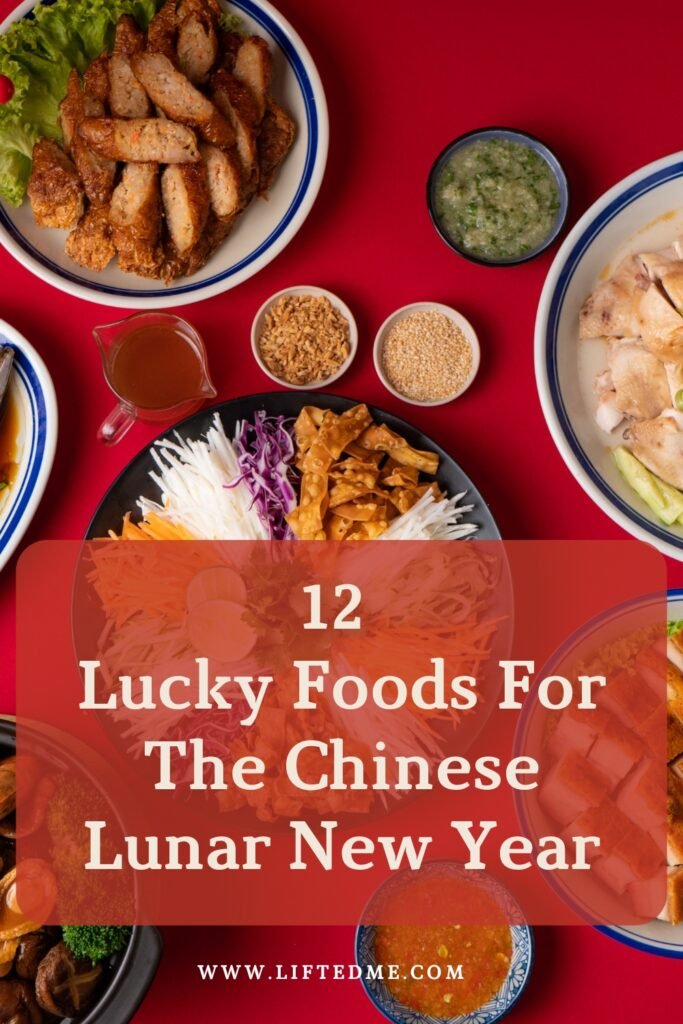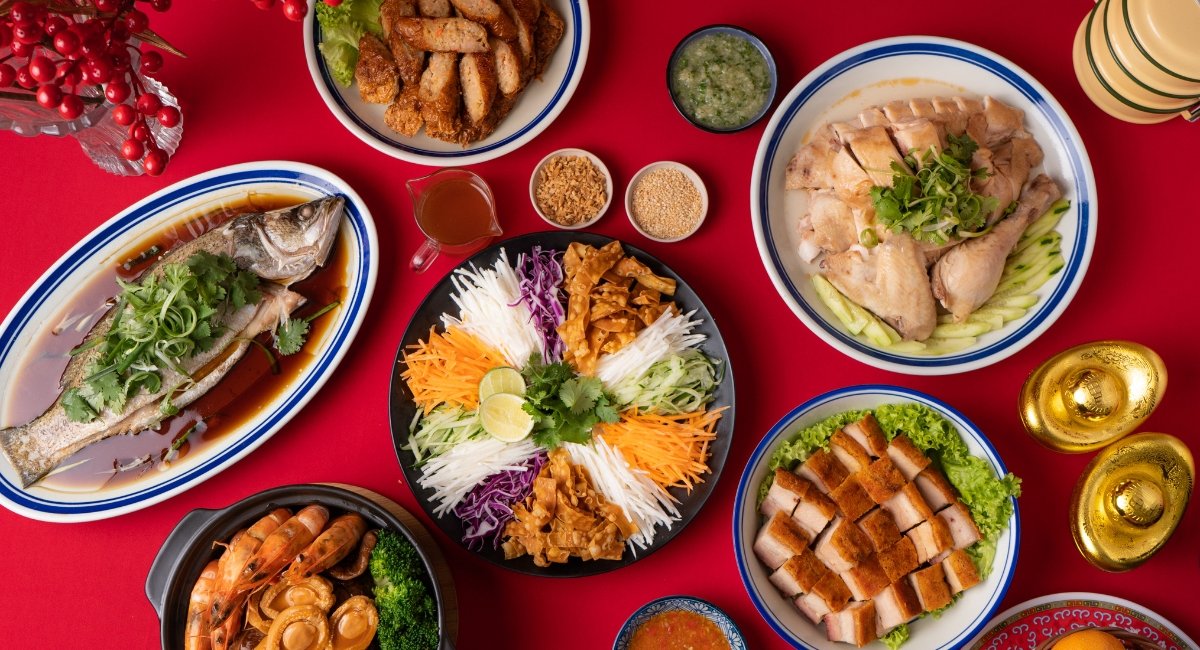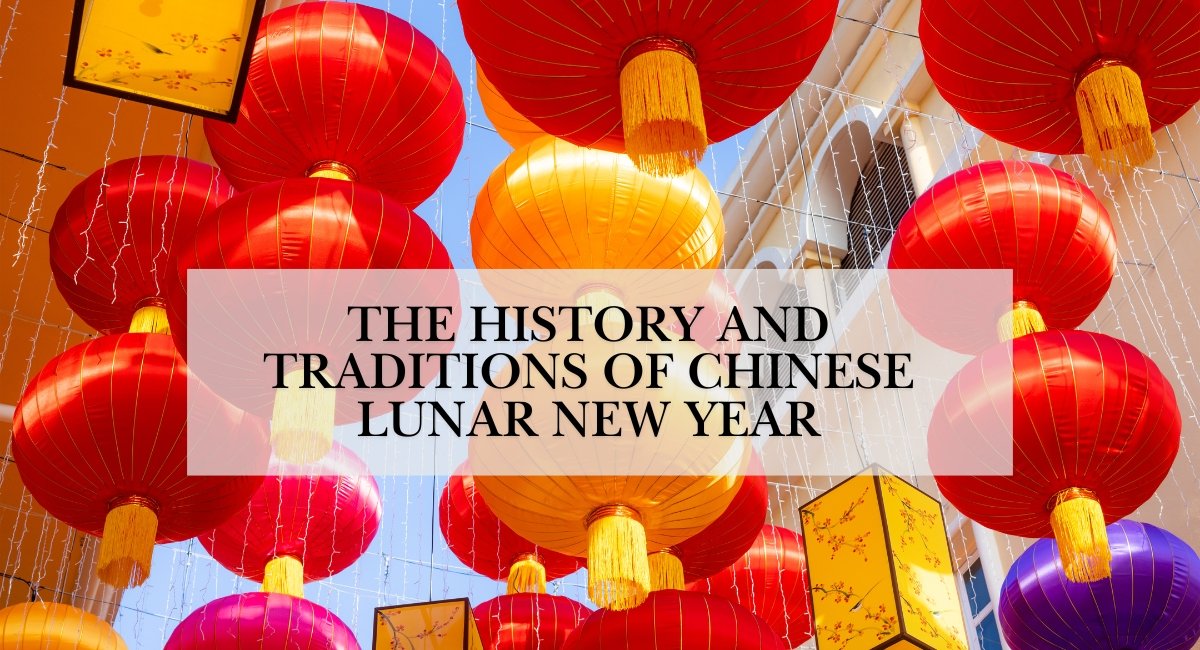12 Lucky Foods For The Chinese Lunar New Year
This post contains paid and/or affiliate links. I make a small commission at no extra cost to you. Please see our Privacy Policy.
The Chinese Lunar New Year is a time of joy and togetherness. It’s filled with family gatherings, fun activities, and delicious foods. Each dish is chosen for its luck and fortune in the new year.
Dumplings (Jiaozi)
Dumplings, or jiaozi, are a key part of the New Year. They look like ancient Chinese money, bringing wealth and luck. Families make lots of dumplings to share, showing unity and abundance.
Fish (Yu)
Fish is a must-have at the celebrations. The word “yu” means abundance, and serving fish whole brings completeness. Keeping leftover fish overnight ensures more abundance next year.
Noodles
Noodles represent a long life. Their long shape means a long life, and they’re served uncut. Eating noodles promises health and longevity in the coming year.
Rice
Rice is a symbol of fertility and abundance. Families make many rice dishes, often with mushrooms or vegetables. These add to the lucky flavors of the dishes.
Spring Rolls
Spring rolls are crispy and savory, symbolizing wealth. Their golden color and shape resemble gold bars, inviting prosperity. The crispy outside is key for financial luck.
Whole Chicken
A whole chicken represents family unity and happiness. It’s served with head and feet, showing completeness. The chicken symbolizes family togetherness, a key part of Lunar New Year.

Sticky Rice Cake (Nian Gao)
Nian gao, or sticky rice cake, is sweet and symbolic. It means “year” and “tall,” signifying growth and prosperity. It’s enjoyed steamed or fried, making it a special treat.
Oranges and Tangerines
Oranges and tangerines are loved for their bright color and sweetness. Their name sounds like “wealth,” making them popular for gifts and decorations. Families display them to attract good fortune.
Glutinous Rice Balls (Tangyuan)
Tangyuan represent family togetherness and completeness. These sweet dumplings are filled with sesame or peanut paste and served in warm broth. Their round shape signifies unity, making them a staple at family gatherings.
Lotus Seeds
Lotus seeds are included in desserts for their fertility and hope for many children. Eating them is believed to bring blessings for big families and strong descendant lines.
Red Dates (Hongzao)
Red dates symbolize good health and longevity. They’re often stewed or used in desserts, wishing for a long, healthy life. They’re also offered during prayers for blessings and family well-being.
Peas or Green Beans
Green peas or beans represent wealth and growth. They add color to dishes and symbolize a leap into prosperity. Including them in celebrations is thought to ensure a fruitful year.
The variety of lucky foods in the Chinese Lunar New Year goes beyond food. They symbolize wealth, health, prosperity, and family unity.
Understanding these dishes helps us fully enjoy the celebration and invite good fortune into our homes.
Traditional Cooking Methods for Celebrating the Lunar New Year
As the Lunar New Year nears, families worldwide prepare delicious foods. These dishes are filled with history and meaning. Traditional cooking methods bring people together and honor cultural practices.
Top chefs and home cooks use old techniques to make dishes that symbolize prosperity and good luck. They focus on health too.
Steaming
Steaming is a favorite method for Lunar New Year cooking. It’s used for dumplings, buns, and fish. This method keeps the natural flavors and nutrients of the ingredients.
Many families steam whole fish, as it symbolizes abundance for the year ahead.
Key Dishes:
- Jiaozi (Dumplings): Representing wealth, dumplings are shaped like ancient gold ingots.
- Baozi (Buns): These fluffy buns often hold sweet or savory fillings and symbolize prosperity.
- Steamed Fish: Served whole, it represents a good start and end to the year.
Stir-frying
Stir-frying is quick and keeps dishes crunchy and flavorful. It’s used for vegetables, meat, and noodles. Different ingredients have auspicious meanings, making meals meaningful and visually appealing.
Key Dishes:
- Chow Mein: Noodles symbolize long life; they’re a must-have during Lunar New Year.
- Stir-fried Greens: Vegetables like bok choy or Chinese broccoli are common, symbolizing growth and prosperity.
- Meat Stir-fry: Pork, chicken, or beef stir-fried with vegetables enhances both flavor and health.
Simmering
Simmering is key for rich soups and broths that warm the body and soul. Families prepare nourishing soups with traditional ingredients that have special meaning.
Key Dishes:
- Hot Pot: A communal dish symbolizing unity, where ingredients are cooked at the table in a shared pot.
- Eight Treasure Rice: This sweet rice dish is prepared with dried fruit and nuts, symbolizing wealth and happiness.
- Long Life Noodles in Soup: The long noodles symbolize longevity, making them a vital part of any Lunar New Year celebration.
Baking
Baking isn’t just for desserts. Traditional Lunar New Year treats often rely on this method to create textured goodies. Mooncakes, for example, are shared among family and friends and hold symbolic meanings.
Key Dishes:
- Mooncakes: Typically filled with sweet bean pastes or lotus seed filling, these represent unity and completeness.
- Pineapple Cakes: These sweet treats symbolize good fortune and are commonly gifted to friends and family.
Frying
Frying, including deep-frying, is celebrated during the Lunar New Year. Crispy textures add an interesting contrast to other dishes and signify good luck and happiness.
Key Dishes:
- Spring Rolls: Symbolizing wealth and prosperity, these tasty treats are filled with vegetables, meat, or seafood.
- Fried Tofu: Crisp tofu can represent balance and harmony, making it a welcome addition to any feast.
The traditional cooking methods used during the Lunar New Year are rooted in customs that aim to bring good fortune and joy to families.
Each technique, whether steaming, stir-frying, simmering, baking, or frying, allows the rich flavors of the unique ingredients to shine while often carrying deep symbolic meanings.
As families gather to enjoy these festive dishes, they celebrate their heritage and create lasting memories around the table.
Conclusion
Celebrating the Chinese Lunar New Year is more than just fun. It’s filled with meaningful traditions and special foods. You’ve learned about the 12 lucky foods, each symbolizing prosperity, longevity, and happiness.
These dishes are not just tasty; they carry deep wishes for the new year. They remind us of our hopes as we start anew.
Traditional cooking methods add to the Lunar New Year’s magic. Steaming, stir-frying, and braising keep the food’s essence alive. They honor the traditions passed down through generations.
Preparing these dishes with love strengthens family bonds. It makes the celebration even more special.
As you welcome the Lunar New Year, remember the importance of your meals. Each bite of lucky food brings good fortune. Embrace the flavors and stories behind them.
This year, celebrate with family or friends. Let the food’s symbolism guide your spirit. May your table be filled with joy, abundance, and a prosperous year ahead.
Enjoy the traditions, savor the dishes, and make memories that will last forever!



